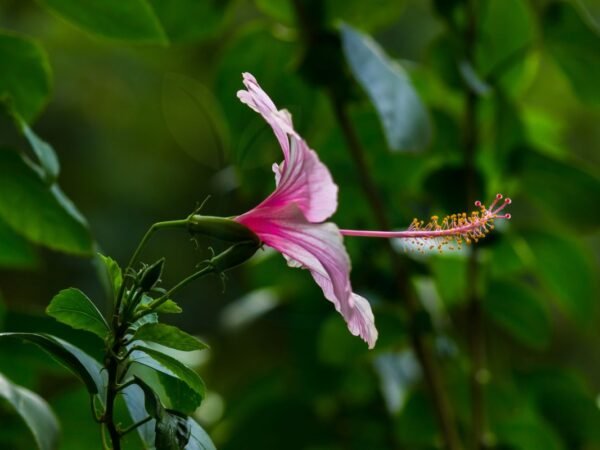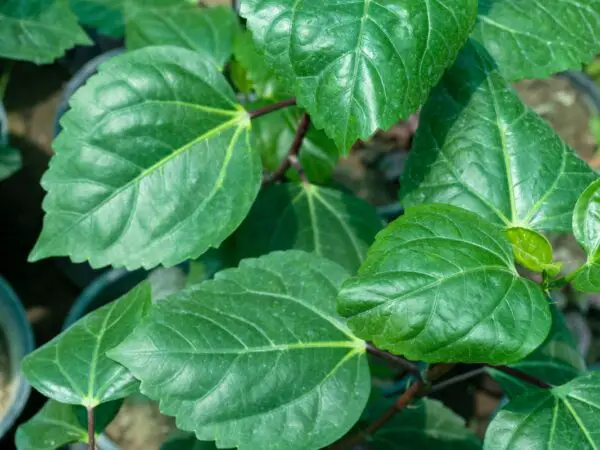Want to know how to get your hibiscus to bloom? It's all about the right care and attention. By following a few simple steps, you can transform your hibiscus plant into a blooming beauty that will brighten up your garden or home.
Key Takeaways
-
Provide Optimal Growing Conditions: Ensure your hibiscus receives adequate sunlight, water, and well-draining soil to promote blooming.
-
Feed Proper Plant Nutrition: Use a balanced fertilizer with higher phosphorus content to encourage flower production.
-
Implement Pruning Practices: Regularly prune your hibiscus to remove dead or overgrown branches and stimulate new growth and blooming.
-
Combat Pest and Disease Issues: Monitor your plant for pests and diseases, and take prompt action to prevent them from hindering blooming.
-
Encourage Blooming with Proper Care: Adjust watering, fertilizing, and light exposure, based on the plant's needs to support blooming in the sun.
-
Troubleshoot Non-Blooming Problems: Address common issues like over-fertilization, insufficient light, or root-bound conditions that may inhibit blooming.
Understanding Hibiscus
Types
Hardy hibiscus comes in various varieties such as the Luna series, Summerific series, and Midnight Marvel. Each type has distinct characteristics, like flower color, size, and cold hardiness. Consider your preferences, garden conditions, and sun when selecting a suitable type.
-
Luna series: Known for its compact growth habit and vibrant colored flowers.
-
Summerific series: Features large blooms in various colors like pink, red, and white.
-
Midnight Marvel: Recognized for its deep red flowers and dark foliage.
Growth Habits
Hardy hibiscus plants exhibit typical growth patterns, including upright stems and large leaves. To ensure optimal blooming conditions, regularly monitor the plant's growth habits. Adjust watering, fertilizing, and pruning routines based on the specific growth habits of your hardy hibiscus.
-
Upright stems: Provide structural support for the plant's large blooms.
-
Large leaves: Help in photosynthesis and transpiration processes.
-
Regular monitoring: Ensures the plant is healthy and thriving.
Bloom Cycles
Track the bloom cycles of hardy hibiscus to anticipate when they will flower throughout the year. Factors like sunlight exposure, temperature fluctuations, and soil moisture levels can influence the plant's bloom cycles. Plan your gardening activities around these cycles to encourage maximum flowering.
-
Sunlight exposure: Ensure your hibiscus receives adequate sunlight for blooming.
-
Temperature fluctuations: Sudden changes can affect bloom initiation and duration.
-
Soil moisture levels: Maintain consistent watering to support healthy blooms.
Optimal Growing Conditions
Sunlight needs
Hardy hibiscus plants require adequate sunlight to bloom vibrantly. Place them in spots with optimal sunlight exposure to encourage blooming. Adjust exposure based on their specific sunlight requirements.
Soil requirements
To ensure successful blooming, understand the specific soil needs of hardy hibiscus. Test and amend the soil to meet ideal conditions for growth. Maintain proper soil moisture and nutrient levels for optimal blooming.
Watering schedule
Establish a consistent watering routine to keep hardy hibiscus healthy and blooming. Monitor soil moisture levels closely and adjust watering frequency accordingly. Avoid issues like overwatering or underwatering by adhering to a suitable watering schedule.
Temperature range
Know the temperature range that fosters blooming in hardy hibiscus plants. Shield them from extreme temperatures that can hinder blooming progress. Create a microclimate to maintain an environment with the ideal temperature range for blooming.
Plant Nutrition
Fertilizing basics
Type of fertilizer
-
Choose fertilizers rich in essential nutrients like potassium for healthy hibiscus growth.
-
Apply the appropriate type of fertilizer to encourage blooming in hardy hibiscus plants.
-
Follow recommended guidelines for fertilizing to ensure optimal blooming conditions.
Application frequency
-
Determine the necessary frequency of fertilizer application to promote blooming effectively.
-
Schedule regular applications during the growing season for sustained flowering.
-
Adjust the application frequency based on the specific needs of your hibiscus plants.
Nutrient deficiencies
-
Identify common nutrient deficiencies such as lack of potassium that can hinder blooming.
-
Promptly address any nutrient deficiencies to support overall health and flowering.
-
Use suitable supplements to correct imbalances and enhance blooming in hibiscus plants.
Pruning Practices
When to prune
Understanding the best time to prune hardy hibiscus plants is crucial for optimal blooming results. Plan your pruning activities carefully to ensure they do not disrupt the plant's natural blooming cycle. By pruning at the right time, you can effectively stimulate new growth and encourage abundant flowering.
Pruning techniques
To enhance blooming in hardy hibiscus plants, it is essential to learn and apply effective pruning techniques. Utilize the correct tools and methods when pruning to avoid causing any damage to the plant. Selective pruning is a recommended practice as it helps shape the plant while also promoting blooming.
Pest and Disease Management
Common pests
Hardy hibiscus plants are susceptible to common pests such as aphids, spider mites, and whiteflies. These pests feed on plant sap, weakening the hibiscus and hindering blooming. Implement pest control measures by regularly inspecting the plant for signs of infestation. Use insecticidal soap or neem oil to prevent infestations and protect the blooming process. Monitor for signs like distorted leaves or sticky residue, and take prompt action to maintain a healthy blooming cycle.
Disease prevention
To ensure optimal blooming in hardy hibiscus plants, it is crucial to implement disease prevention strategies. Maintain good hygiene practices by removing fallen leaves and debris from around the plant to prevent the spread of diseases. Treat and manage diseases promptly with fungicides or bactericides to preserve the health of the plant and promote continuous blooming. By addressing diseases early on, you can safeguard the blooming potential of your hibiscus.
Natural remedies
When facing issues that affect blooming in hardy hibiscus, consider natural remedies as an effective solution. Organic options like garlic spray or insecticidal soap can help address common problems without harming beneficial insects. By incorporating natural remedies into your gardening routine, you can promote sustainable blooming results while minimizing chemical exposure. Embracing these holistic approaches not only supports blooming but also enhances overall plant health.
Encouraging Blooming
Stimulating flower production
Hardy hibiscus plants can be encouraged to produce more flowers by employing specific techniques. Providing optimal growing conditions and care is crucial for enhancing blooming. Experimenting with different methods is essential to increase flower production in hardy hibiscus.
-
Try adjusting sunlight exposure and watering routines to stimulate flower production.
-
Ensure the soil is well-drained and rich in nutrients to support healthy blooming.
-
Consider using a flower booster specifically designed for hibiscus plants to promote flower growth.
Deadheading
Understanding the significance of deadheading is key to ensuring continuous blooming in hardy hibiscus. Regularly removing spent blooms through deadheading helps encourage new flower growth. Incorporate deadheading into your maintenance routine to prolong blooming periods effectively.
-
Deadheading prevents energy waste on seed production, redirecting it towards new blooms.
-
Removing faded flowers promptly prevents the plant from focusing on seed formation.
-
Deadheading also maintains the aesthetic appeal of your hibiscus garden, promoting continuous flowering.
Stress management
Managing environmental stressors that can affect blooming in hardy hibiscus plants is vital for their overall health. Implementing stress-reducing techniques supports healthy growth and flowering. Creating a stress-free environment ensures optimal conditions for blooming.
-
Protect your hibiscus from extreme weather conditions like strong winds or excessive heat.
-
Maintain consistent watering schedules to prevent drought stress that can hinder blooming.
-
Regularly inspect your plants for signs of pests or diseases that may cause stress and impact flowering.
Seasonal Care Tips
Winter care
Hardy hibiscus plants need special attention during winter to ensure blooming in the upcoming season. Protect them from cold temperatures and frost by providing adequate winter protection. Adjust care routines to maintain plant health and blooming potential during the colder months.
Summer maintenance
Support blooming in hardy hibiscus by implementing proper summer maintenance practices. Regularly monitor your plants throughout the summer for optimal growth and flowering. Adapt watering, fertilizing, and pruning routines to meet the specific needs of hardy hibiscus during the warmer months.
Troubleshooting Non-Blooming Issues
Overwatering signs
Hardy hibiscus plants may exhibit signs of overwatering such as yellowing leaves, wilting, or root rot. Adjust watering frequency to prevent waterlogged soil. Monitor the soil's moisture levels by checking the top inch regularly.
Nutrient imbalance
Nutrient imbalances can hinder blooming in hardy hibiscus. Test the soil for deficiencies or excesses of key nutrients like nitrogen, phosphorus, and potassium. Maintain a balanced fertilizer regimen to support healthy flowering.
Light deficiencies
Symptoms of light deficiencies, like leggy growth or pale leaves, can impede blooming in hardy hibiscus plants. Ensure your plant receives at least 6-8 hours of direct sunlight daily. Consider moving the plant to a brighter location if needed.
Advanced Techniques
Grafting for blooms
Grafting offers a unique way to boost blooming in hibiscus plants by combining different varieties. By mastering grafting techniques, you can enhance the flowering potential of your hardy hibiscus. Experiment with grafting to achieve desired results and create stunning blooms in your garden.
Hybrid varieties
Explore the world of hybrid hibiscus varieties, each known for its distinctive blooming characteristics. Compare these hybrids to traditional hibiscus plants to understand their unique traits. Planting hybrid varieties can bring a burst of colors, shapes, and blooming patterns to your garden.
Final Remarks
By now, you have gained valuable insights into nurturing your hibiscus plants for optimal blooming. Understanding their needs, providing the right conditions, ensuring proper nutrition, and implementing effective care practices are all crucial for encouraging vibrant blooms. Remember to stay vigilant against pests and diseases and follow seasonal care tips to maintain healthy growth.
Implement the strategies discussed, experiment with advanced techniques, and observe how your hibiscus responds. Your dedication will be rewarded with a profusion of colorful blooms that will brighten your surroundings. Share your successes with fellow gardening enthusiasts and continue learning to enhance your green thumb skills.
Frequently Asked Questions
How do I understand the needs of my hibiscus plant?
Understanding your hibiscus involves knowing its sunlight, water, soil, and temperature requirements. Research the specific type of hibiscus you have to provide tailored care for optimal growth and blooming.
[Question]
To encourage blooming in your hibiscus plant, ensure it receives at least 6 hours of direct sunlight daily, use well-draining soil, maintain consistent watering schedule, apply a balanced fertilizer during the growing season, and prune regularly to promote new growth and flower formation.
What are the common pests and diseases affecting hibiscus plants?
Common pests include aphids, whiteflies, and spider mites while diseases like powdery mildew and leaf spot can affect hibiscus. Monitor your plant regularly for signs of infestation or disease and take prompt action using organic or chemical treatments as needed.
How can I troubleshoot non-blooming issues with my hibiscus plant?
Check for factors such as insufficient sunlight, improper pruning, over-fertilization, stress from pests or diseases, or incorrect watering practices. Address each issue accordingly by adjusting care routines to create an environment conducive to blooming.
Are there advanced techniques to enhance blooming in hibiscus plants?
Advanced techniques include using bloom-boosting fertilizers high in phosphorus, implementing strategic pruning methods to stimulate flower production, experimenting with light deprivation techniques to trigger blooming cycles, and utilizing specialized growth hormones to encourage prolific flowering in hibiscus plants.
Image Source: Paid image from CANVA





